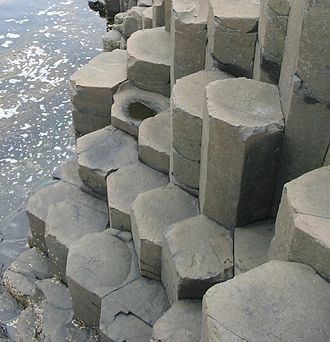Whatever the correct description is for what is happening, it will involve fine tuning, not wholesale abandonment of the basics.
I'm not abandoning the basics. There is no need to change any fact. What we do need to question is paradigm that states that what we see today is what has been going on for millions of years.
The only relevance that the icebergs have is to illustrate that what we see sticking up is only a small fraction of what is actually there, just like with continental crust.
I know why you mentioned them. But it's also a good analogy of what the leading edge of 2 crusts do when they meet each other. Although more slab-like icebergs are what I had in mind, it's still not too far off the mark.
I don’t know what the relevance of the “no momentum” qualifier is, unless you are pandering to the ignorant by making the idea of one land mass penetrating another look silly.
That's how it is. Either there is momentum or there is a mechanism to push the slabs. It isn't momentum, thus, they are correctly described as having "no momentum."
I already faulted Walt Brown earlier for stooping to that level of discourse. So before I decide, can you supply sources showing that geologists believe that the momentum is a significant player in, say, the northern migration of India into the Asian continent?
There isn't any momentum, but somehow they crashed. I'd say writing off the idea that momentum played a part just because dogma says so isn't accurate science. Another way of putting it is that since they look like they've crashed with momentum, then what is your evidence against the obvious?
I agree that if icebergs did end up getting squished together, they would essentially “sink to the same level as (they) had been.” Are you implying that is not the case in Asia?
I'm saying that the energy to push a slab sideways into the Himalayas without momentum, since the raised portion wants to sink, should take other possibilities into account. I'm not even saying that Dr. Brown's idea is the one to take into account. But I am saying that catastrophe is more likely than the idea that the same process we see today has been going on for millions of years.
the plate tectonic community... don’t have an answer.
Then look at other possibilities. A catastrophe would explain *some* features we see better.
Real informative response. Kinda like the Japanese word “Hai”, which can mean anything from “Yeah, I hear ya” to “You bet, I understand and will get right on it.”
I'm glad you understand the word. It's exactly what I meant since this is not being my area of most studied interest. I think there is a good rebuttal but I don't know it well enough yet to say. And after I find what I'm looking for in a rebuttal, I may turn out to be wrong. So "OK" is perfect.
Let’s see, this caused the largest earthquake ever known to have hit Japan, and this was the 5th largest earthquake in the world in the last century. And you think this one might be in the norm?
No. Does the edge go up or down as the norm is the question.
But now to backtrack to something you have avoided responding to. Back in post 90, in response to my explaining which type of crust subducts, and why, you responded with:
Based on your very concise and unambiguous statement, it certainly sounded like you, like tens of thousands of others, recognized a rational scientific explanation for some important aspects of plate tectonics.
Right. Some aspects are well understood.
But when, in my response, I pointed out that immense spans of time were required, suddenly you realized that would violate an ultra-literal reading of the creation account that was recorded by nomadic tribes thousands of years ago, tribes whose scientific knowledge was below that of many modern elementary school children today. So given the choice between science and ancient tribal dogma, you recanted your assertion that the science was acceptable, and sided with goat herders as your gurus.
That's simply not true. I didn't "suddenly realize" my personal belief of a short time of life on earth would be violated. I responded, as more of a student than a teacher, that there were features that don't fit the scientific explanation. The fact that there was a worldwide flood is a scientific statement. Just because it is consistent with the bible should be no concern of yours.
And just because I mentioned a world wide flood does not directly mean that I'm appealing to Walt Brown. It is only mentioned to remind you that a catastrophe happened. How that affected the crusts is what I'm trying to learn about in this discussion, which it might turn out to be very little.
You didn’t even pretend that your change was due to science, but due to an ancient religious account. I asked you what about the scientific account was wrong, that would justify your changing your mind. Silence has been your answer.
Your radar on detecting why I've responded the way I did is inaccurate. So far, I've only concentrated on the science of the matter. If I'm silent on a point it is because you made a good point or because I'm verifying what you said to make a response.

